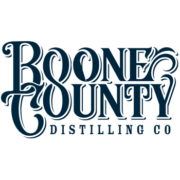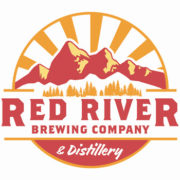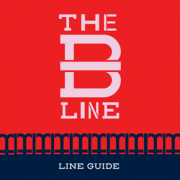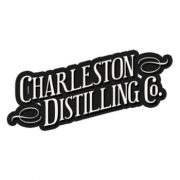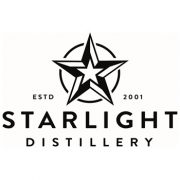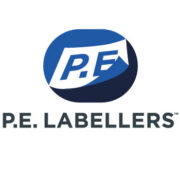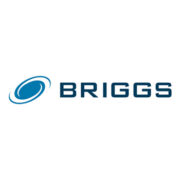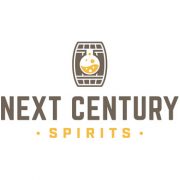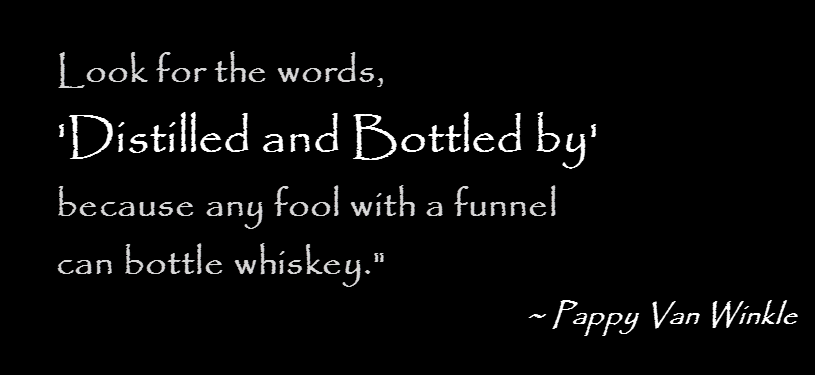
I believe that it’s not just important, but essential to know how to read a bourbon whiskey label. Since bourbon is regulated in the U.S. by the TTB – Alcohol and Tobacco Tax and Trade Bureau, it’s easy to read a label and it’s fascinating and the result is that I can tell a lot about that product just by seeing exactly who made it, how long it’s been aged, ABV – Alcohol by Volume, proof (which is 2 times the ABV in the U.S. and 1.75 times in the U.K.) and where it’s made.
Pappy Van Winkle of Stizel-Weller used to say, “Look for the words ‘Distilled and Bottled by’, because any fool with a funnel can bottle whiskey.”
Update: A reader had a question about this quote. Just to clarify, this was from Julian “Pappy” Van Winkle, born 1874 and died 1965. It does not necessarily reflect today’s distillation of Pappy Van Winkle Bourbon.
From the world according to Julian “Pappy” Van Winkle come these quips:
“It is very important to see these four words on a bottle: ‘Distilled and Bottled by; Because any fool with a funnel can bottle whiskey!”
“If I wanted to drink vodka, I’d find someone who’d sell me a can of alcohol.”
“You cant make good bourbon when you speed things up.”
“I never took a drink of whiskey until Prohibition came in.”
The words, KENTUCKY – STRAIGHT – BOURBON – WHISKEY, all mean something on their own, and when they appear together. Age statements, or the lack of tell me something as well. The words ‘BY’ and ‘IN’ also mean a lot.
You can see all the exact laws as they appear in the TTB Standards of Identity here.
Here are some of the common terms and their meanings.
Stay Informed: Sign up here for the Distillery Trail free email newsletter and be the first to get all the latest news, trends, job listings and events in your inbox.
Whiskey
TTB Definition: Whiskey is an alcoholic distillate from a fermented mash of grain produced at less than 190° proof in such a manner that the distillate possesses the taste, aroma, and characteristics generally attributed to whiskey, stored in oak containers (except that corn whiskey need not be so stored), and bottled at not less than 80° proof, and also includes of mixtures of such distillates for which no specific standards of identity are prescribed.
Whiskey or Whisky. If you search the TTB site they generally use Whisky without the E but that’s another story.
In the Real World: Whiskey can be made from any grain, anywhere in the world, distilled up to 190° proof (this sounds like vodka at this point) and that it looks, smells, and tastes like whiskey and is aged in oak (this is where it becomes defined as whiskey and not vodka) and you can add caramel color, sugars and other things to it to get it to look, smell, and taste like whiskey, and bottled no less than 80° proof.
Bourbon Whiskey
TTB Definition: Bourbon whiskey, rye whiskey, wheat whiskey, malt whiskey, rye malt whiskey, is whiskey produced at not exceeding 160° proof from a fermented mash of not less than 51% corn, rye, wheat, malted barley, or malted rye grain respectively, and stored at not more than 125° proof in charred new oak containers; and also includes mixtures of the same type.
Real World: Which translates to whiskey produced at least 51% of the specified grain for type of whiskey (Bourbon 51% corn, rye 51%, wheat, and so on) distilled under 160° proof, and stored in a brand new charred oak barrel at less than 125° proof, and you can’t add anything but water, or other bourbon to it.
Also notice that it says, “Charred new oak container.” It does not say new oak barrel. Technically, it does not have to be a barrel. It could be an Oak bucket as long as the spirits passes through it.
The TTB also does not require a specified period of time to be labeled as bourbon. Five minutes in a new charred oak container puts it into the bourbon category. It doesn’t mean its good bourbon, just bourbon. But, if it’s only five minutes, you are required to display an age statement on the label. Straight bourbon has to be aged for at least two years in the barrel. Anything aged less than four years requires an age statement.
Corn Whiskey
TTB Definition: Corn whiskey is produced at not exceeding 160° proof from a fermented mash of not less than 80% corn grain, and if stored in oak containers stored at no more than 125° proof in used, or uncharred new oak containers and not subjected to any manner to treatment with charred wood; and also includes mixtures of such whiskey.
Real World: Which means that corn whiskey must be at least 80% corn, distilled no more than 160° proof, and stored in a used charred barrel, or a brand new UN-charred barrel. Corn flavor becomes neutral in new charred barrels, so to keep that corn flavor of corn whiskey you must age it this way to achieve that. Otherwise you’d have bourbon.
Bottled in Bond
Bottled in bond refers to American-made spirit that has been aged and bottled according to a set of legal regulations contained in the United States government’s Standards of Identity for Distilled Spirits (27 C.F.R. 5.21, et. seq.), as originally laid out in the Bottled-in-Bond Act of 1897.
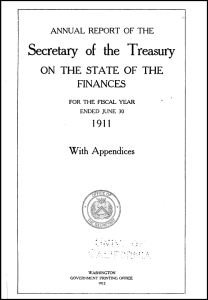
- The product of one distillation season and one distiller at one distillery
- It must have been stored (i.e., aged) in a federally bonded warehouse under U.S. government supervision for at least four years
- Bottled at 100 proof (50% alcohol by volume).
- The bottled product’s label must identify the distillery (by DSP number) where it was distilled and, if different, where it was bottled.
You can also tell if the company listed on the label actually made the whiskey or not by looking for the words, “Distilled by” or “Distilled in”. The law states that if a distillery makes that product, you may state “distilled by” or Distilled and Bottled by (then the name of that distillery)” on the label. If the bourbon is the product of a rectifier (someone that buys stocks of bourbon from distilleries) it usually reads, “Distilled in Kentucky”, or Distilled in Kentucky, Bottled by (then the name of the company)”.
Related Story
What is Bottled in Bond?
Does Rectifier Mean Bad Whiskey?
Short answer is, “No.” There is nothing wrong with rectifier’s products. First of all, they are usually sourced from a distillery that’s been in business a long time, and they know what they’re doing. The rectifier then can age the product longer, or bottle at higher proofs, make a single barrel expression, or do something to put their own stamp on it. If none of these are done though, then I have to question what I’m paying $50 for a bottle of 4 year old 80° proof product that I can get from the same distillery for a fraction of the cost.
There are a lot of craft bourbon distillers opening and mashing across the U.S. now. And this is GREAT for the industry. Just like craft brewing brought a lot of local and regional interest in the industry, the same is happening with bourbon. Because it’s very expensive to get in to the bourbon business, many of the bourbon’s produced by these craft distilleries are extremely expensive on the shelf. For example, Hudson Baby Bourbon is $50 for a .375ml. This shows you how expensive it is to get in to this business.
An old timer at a distillery once told me that wood and time are the two most expensive items to producing bourbon, and that the most valuable commodity at any distillery is experience.
Some of those craft distillers are using pot stills, or hybrid column/pot stills, or using whatever stills they decided on. For sure there will be learning curves. And those learning curves start becoming evident over time. But since bourbon is an aged product, those revelations might not become evident until years later.
Distillers like Jimmy Russel, Fred Noe, Elmer T. Lee and Parker Beam have all made bourbon a long time. They have all told me that if the white dog off the still doesn’t taste good, it doesn’t matter how long you age it, it won’t get better. Which tells me that a good distiller knows exactly what he or she is looking for right off the still.
I currently buy and support just about every new craft distiller’s spirits I can get my hands on. Some are surprisingly good, and others aren’t quite there yet. But all their passion and sweat and toil can be felt, and some you just know are going to be successful if they can make it through the first few years of high overhead costs, and all the challenges a new brand faces.
But there’s one thing I do know that I’m not taking a crap shoot on, and that’s distilleries that have been making bourbon for over a hundred or two years, and that’s Kentucky Straight Bourbon Whiskey produced by the 10 distilleries in that have held the bourbon book mark over the years. These are often the best value’s in the industry too since their over head is much lower, or they’re able to shoulder these costs easier. Just think about it; if you just have one traditional rack house full of aging bourbon, that’s 20,000 barrels. A new barrel costs over $100 per barrel, so that’s $2,000,000 just in wood! Not to mention a place to put it, and the man power and over head. Plus you’ve got the cost of waiting while that product ages and not make money off that while you wait!
I think the word KENTUCKY is a quality stamp similar to COGNAC, ARMAGNAC, or TEQUILA. I look forward to the day that there are hundreds of viable distilleries up and running and being successful. I think that will happen too. I encourage everyone to learn how to read a label. My book, “Bourbon Whiskey-Our Native Spirit” has a fairly in depth chapter on this, and the laws are available online at the TTB website. You’ve got to search around a while to find them, but it’s worth the hunt.
One thing you can count on is that the word BOURBON is a quality stamp on its own since it’s regulated tightly by the U.S. government. But reading deeper can perhaps tell you just who is making the product and if there is an actual person making it and deciding what proof it’s comes of the still, what proof to barrel it, what floor it’s aged on, for how long, and what proof to bottle.
Get nosey, and educated! Learn how to read a label and get out there and have fun!
Please help to support Distillery Trail. Like us on Facebook and Follow us on Twitter.

